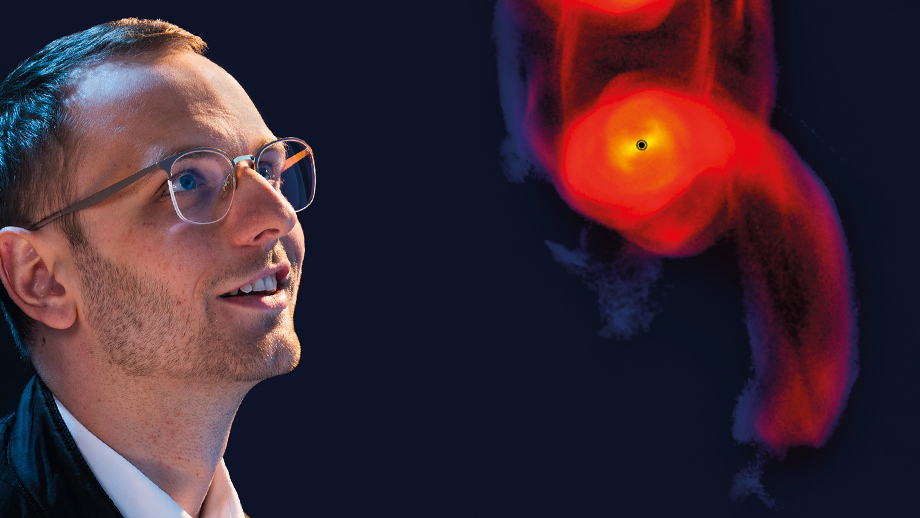Navigation auf uzh.ch
Navigation auf uzh.ch

Stefan Stöcklin; English Translation by Philip Isler, UZH Communications
Tomas Tamfal’s research objects are both near and incredibly far away. The astrophysicist investigates dwarf galaxies, some of which are billions of light years away in outer space. However, he isn’t observing these distant objects through a telescope, but instead uses a computer to calculate their behavior. “We simulate collisions of dwarf galaxies to find out more about their properties,” says Tamfal. As a member of Lucio Mayer’s research group, he’s taken a particular interest in the black holes at the center of dwarf galaxies. The gravity in these incredibly dense objects is so strong that neither light nor matter can escape. But when two galaxies collide, it creates gravitational waves that can be measured with cutting-edge measuring tools such as the Laser Interferometer Space Antenna, or LISA. Model calculations made by Tomas Tamfal now show that gravitational waves from colliding dwarf galaxies could shed light on the nature of the mysterious dark matter. So when LISA starts delivering data a few years from now, this could also help reveal the secrets of this puzzling astrophysical phenomenon. Tamfal is already looking forward to that day. In the meantime, he’s also happy to look up from his computer screen from time to time – to the night sky and its many mysteries.